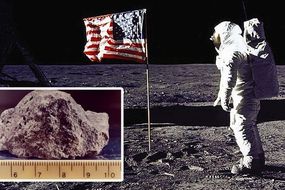Asteroid news: A 4KM rock to make Earth ‘close approach’ – astronomers can already see it – Express.co.uk
AN ASTEROID which will make a “close approach” past Earth and has been dubbed “potentially hazardous” by NASA due to its sheer size was photographed many millions of miles from Earth.
The NASA-tracked asteroid will pay a visit to Earth’s corner of space on April 29 this year. Astronomers have named the object Asteroid 52768 (1998 OR2) and expect it to make what the US-based space agency knows as a “close approach” of about 3.9 million miles (6.29 million km) from Earth.
According to Astrophysicist Gianluca Masi of the Virtual Telescope Project in Italy, the asteroid was about 15.5 million miles (25 million km) from Earth on March 24.
But the space rock is already visible to some telescopes, appearing as a bright dot of light against the starlit sky.
Dr Masi will track and stream online the asteroid’s flyby next month – click here to learn more.
He said: “When we imaged it, Asteroid 1998 OR2 was about 25 millions of kilometres from us.
“This 1.8 to 4.1km large asteroid will come as close as 6.3 millions of kilometres from us next April 29 – more than 16 times the average lunar distance: it will not hit us – becoming bright enough to be seen with modest optical equipment.”
READ MORE: Alien hunter claims to find SKULL on Mars – ‘Died in pain’
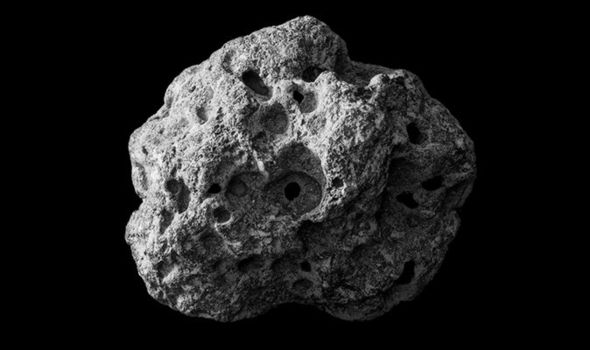
Asteroid news: A 4KM space rock will swing past Earth on April 29 (Image: GETTY)
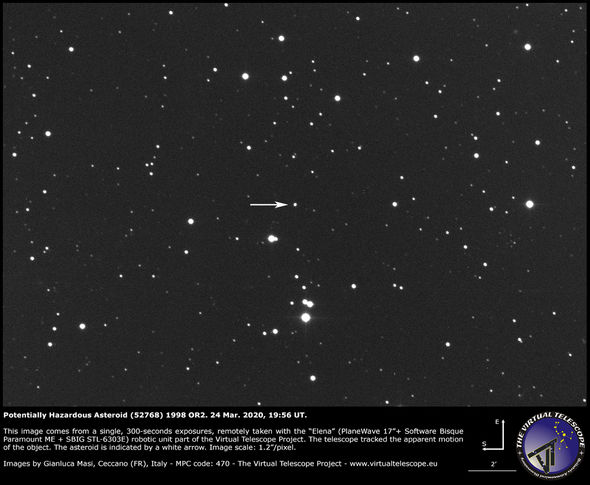
Asteroid news: Dr Gianluca Masi snapped this photo of the asteroid (Image: DR GIANLUCA MASI)
READ MORE
-
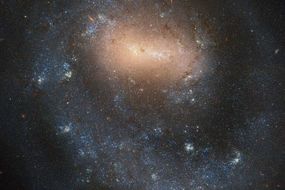
NASA news: Space agency reveals ‘one-armed’ galaxy in stunning image
“This 1.8 to 4.1km large asteroid will come as close as 6.3 millions of kilometres from us next April 29 – more than 16 times the average lunar distance: it will not hit us – becoming bright enough to be seen with modest optical equipment.”
Dr Masi photographed the asteroid on March 24, using a 17-inch telescope dubbed Elena.
The black and white photo is a single 300-second exposure.
The astronomer said: “The asteroid is in the centre of the image, marked by an arrow.
“The telescope tracked the apparent motion of 1998 OR.”
But if the space rock will fly by from such a far distance, why is it considered potentially hazardous?
According to the US space agency NASA, asteroids and comets are considered potentially hazardous if they measure more than 492ft (150m) across.
Asteroid 1998 OR2 was about 25 millions of kilometers from us
The space rocks approach our planet’s orbit from within 4.6 million miles (7.5 million km).
NASA said: “A relatively small number of near-Earth objects pass close enough to Earth and are large enough in size to warrant close observation.
“That’s because the gravitational tug of the planets could, over time, cause an object’s orbital path to evolve into an Earth-crossing orbit.
DON’T MISS
Coronavirus: Reasons to be positive during pandemic [INSIGHT]
Supermoon 2020: Look out for the biggest Moon of 2020 [FORECAST]
Ozone layer is RECOVERING in rare good news for Earth [INSIGHT]
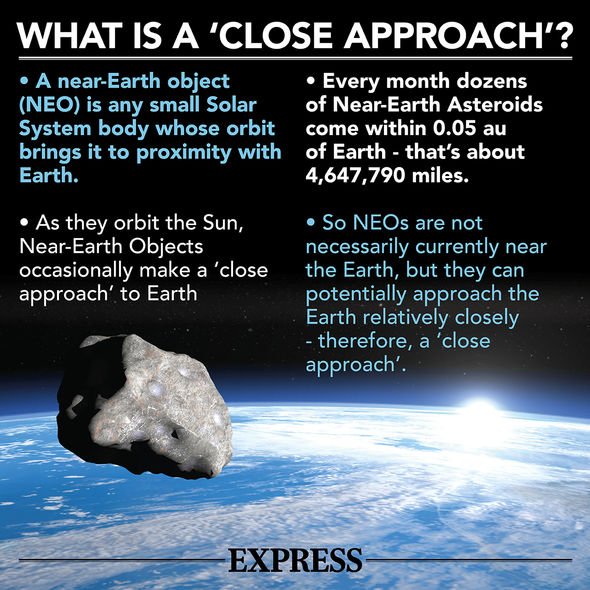
Asteroid flyby: Some space rocks make a so-called ‘close approach’ to Earth (Image: EXPRESS)
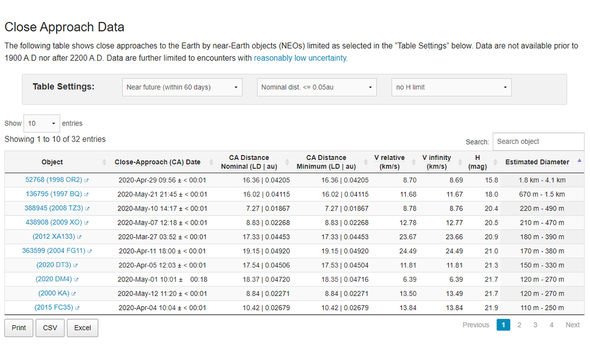
Asteroid news: The space rock will be visible to telescopes in late April (Image: NASA)
READ MORE
-

‘Biggest mystery’ what Neil deGrasse Tyson loses sleep over
“This allows for the possibility of a future collision.”
But the good news is the asteroid is not expected to come close enough to pose any danger.
NASA does not know of any asteroid or comet that will hit the planet for the next few hundred years.
Small asteroids do, however, hit the Earth quite frequently.
Every day the atmosphere is bombarded by a hundred tonnes of small debris and sand grain-sized particles.
NASA said: “About once a year, an automobile-sized asteroid hits Earth’s atmosphere, creates an impressive fireball, and burns up before reaching the surface.
“Every 2,000 years or so, a meteoroid the size of a football field hits Earth and causes significant damage to the area.”
Asteroid OR is flying through space at speeds of about 8.7km per second or 19,461mph (31,320kmh).
Flying past Earth from a distance of 3.9 million miles (6.29 million km), the asteroid will be 16 times farther away than the Moon is.




